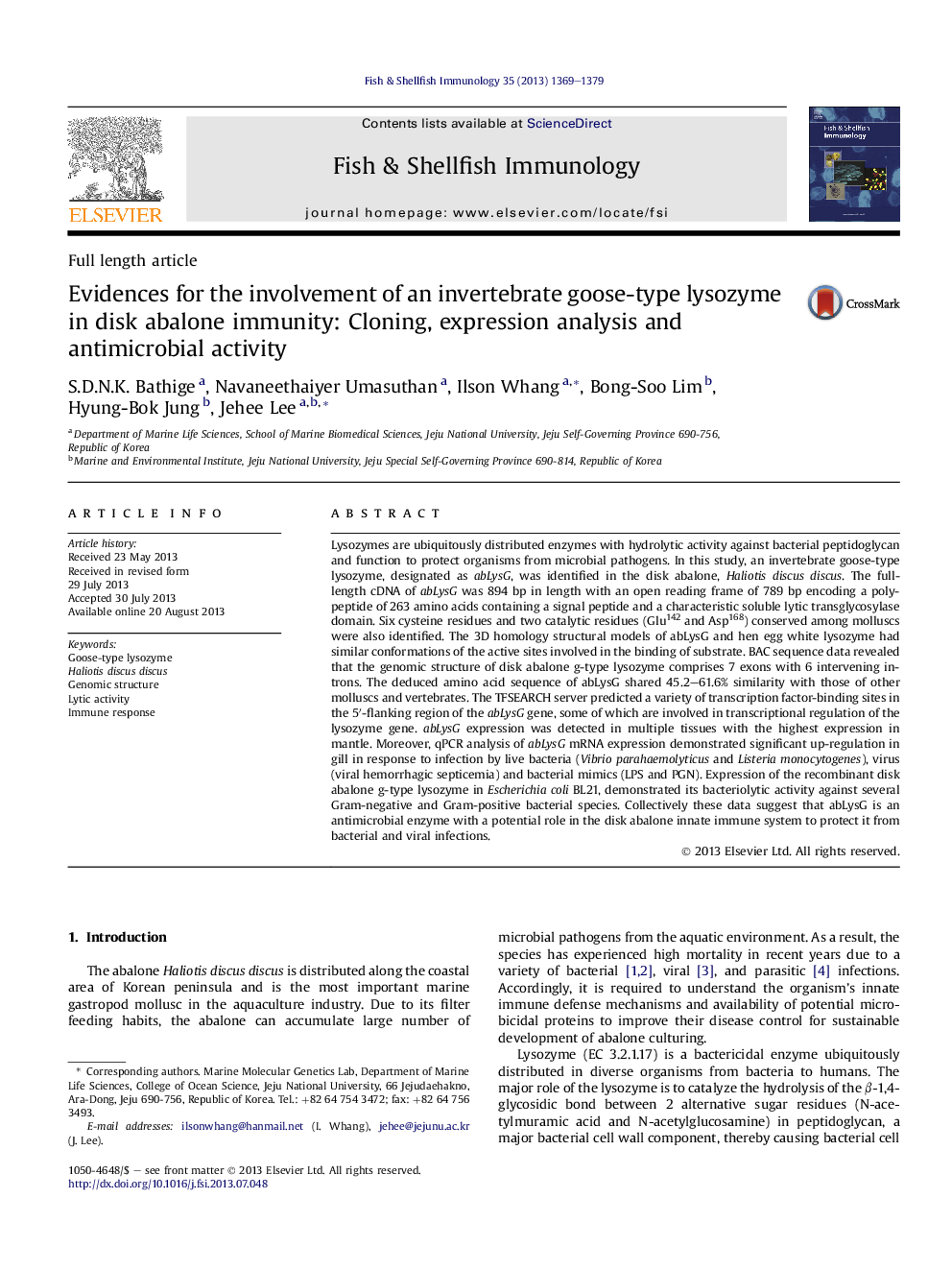| Article ID | Journal | Published Year | Pages | File Type |
|---|---|---|---|---|
| 2431707 | Fish & Shellfish Immunology | 2013 | 11 Pages |
•A goose-type lysozyme (abLysG) from Haliotis discus discus was cloned.•Genomic structure and putative promoter of abLysG were characterized.•Expressional analysis of abLysG after PAMPs and live pathogen infections was performed.•Optimal conditions (pH and temperature) for muramidase activity of (r)abLysG were determined.•Bactereolytic activity of abLysG was examined using different strains.
Lysozymes are ubiquitously distributed enzymes with hydrolytic activity against bacterial peptidoglycan and function to protect organisms from microbial pathogens. In this study, an invertebrate goose-type lysozyme, designated as abLysG, was identified in the disk abalone, Haliotis discus discus. The full-length cDNA of abLysG was 894 bp in length with an open reading frame of 789 bp encoding a polypeptide of 263 amino acids containing a signal peptide and a characteristic soluble lytic transglycosylase domain. Six cysteine residues and two catalytic residues (Glu142 and Asp168) conserved among molluscs were also identified. The 3D homology structural models of abLysG and hen egg white lysozyme had similar conformations of the active sites involved in the binding of substrate. BAC sequence data revealed that the genomic structure of disk abalone g-type lysozyme comprises 7 exons with 6 intervening introns. The deduced amino acid sequence of abLysG shared 45.2–61.6% similarity with those of other molluscs and vertebrates. The TFSEARCH server predicted a variety of transcription factor-binding sites in the 5′-flanking region of the abLysG gene, some of which are involved in transcriptional regulation of the lysozyme gene. abLysG expression was detected in multiple tissues with the highest expression in mantle. Moreover, qPCR analysis of abLysG mRNA expression demonstrated significant up-regulation in gill in response to infection by live bacteria (Vibrio parahaemolyticus and Listeria monocytogenes), virus (viral hemorrhagic septicemia) and bacterial mimics (LPS and PGN). Expression of the recombinant disk abalone g-type lysozyme in Escherichia coli BL21, demonstrated its bacteriolytic activity against several Gram-negative and Gram-positive bacterial species. Collectively these data suggest that abLysG is an antimicrobial enzyme with a potential role in the disk abalone innate immune system to protect it from bacterial and viral infections.
